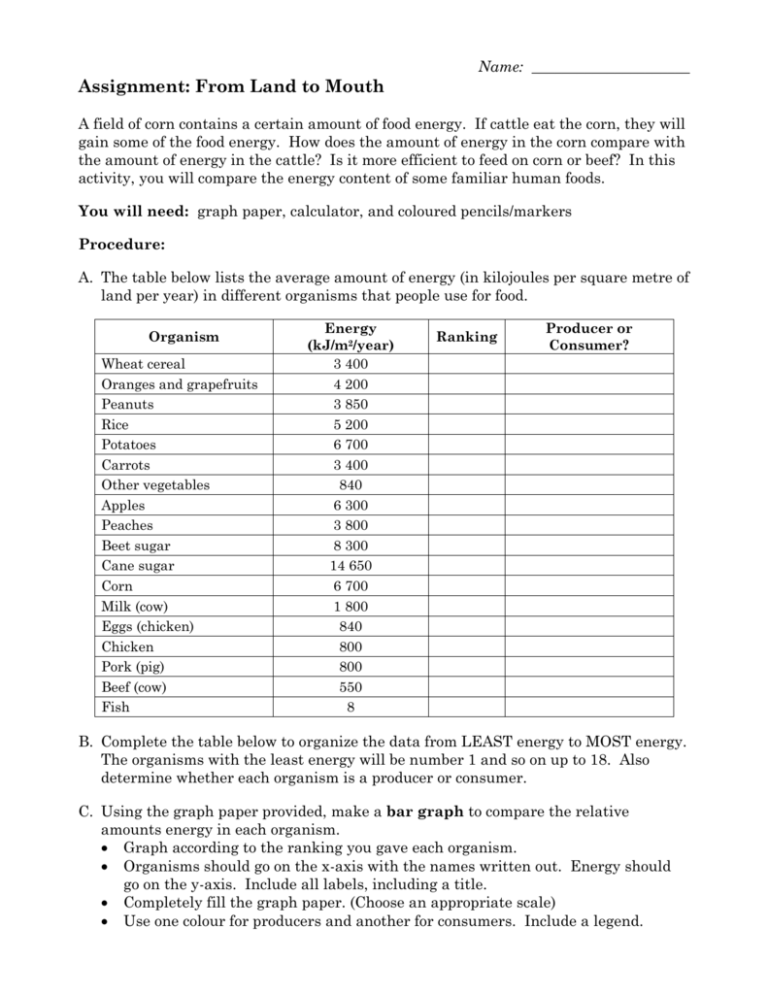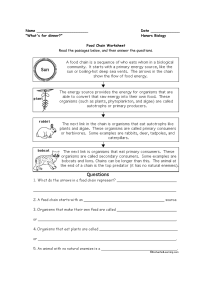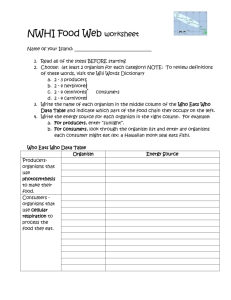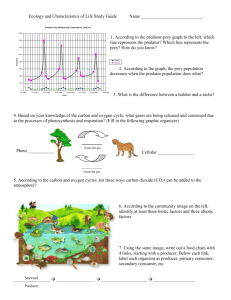Lab Exercise: From Land to Mouth
advertisement

Name: _____________________ Assignment: From Land to Mouth A field of corn contains a certain amount of food energy. If cattle eat the corn, they will gain some of the food energy. How does the amount of energy in the corn compare with the amount of energy in the cattle? Is it more efficient to feed on corn or beef? In this activity, you will compare the energy content of some familiar human foods. You will need: graph paper, calculator, and coloured pencils/markers Procedure: A. The table below lists the average amount of energy (in kilojoules per square metre of land per year) in different organisms that people use for food. Organism Wheat cereal Oranges and grapefruits Peanuts Rice Potatoes Carrots Other vegetables Apples Peaches Beet sugar Cane sugar Corn Milk (cow) Eggs (chicken) Chicken Pork (pig) Beef (cow) Fish Energy (kJ/m2/year) 3 400 4 200 3 850 5 200 6 700 3 400 840 6 300 3 800 8 300 14 650 6 700 1 800 840 800 800 550 8 Ranking Producer or Consumer? B. Complete the table below to organize the data from LEAST energy to MOST energy. The organisms with the least energy will be number 1 and so on up to 18. Also determine whether each organism is a producer or consumer. C. Using the graph paper provided, make a bar graph to compare the relative amounts energy in each organism. Graph according to the ranking you gave each organism. Organisms should go on the x-axis with the names written out. Energy should go on the y-axis. Include all labels, including a title. Completely fill the graph paper. (Choose an appropriate scale) Use one colour for producers and another for consumers. Include a legend. Analysis Questions: Answer questions in the space provided. Show all work and give detailed answers. 1. What is the average energy (kJ/m2/year) of all the producers? Add up all the energy numbers for the producers, and then divide by the total number of producers. 2. What is the average energy (kJ/m2/year) of all the consumers? Add up all the energy numbers for the consumers, and then divide by the total number of consumers. 3. Which food type (producer or consumer) gives the most energy? Explain why: 4. Choose one producer and one consumer from the table. Assume that 800 kJ of each organism is consumed in one meal (number on the top). Calculate the area needed to produce 800 kJ of each organism per year. Use the formula: kJ per meal m 2 of land required kJ/m 2 /year Producer: ____________________ Consumer: ____________________ Which organism took up more land? Why do you think this is? 5. Do you think it is more efficient for people to eat plant products or animal products? Why?











